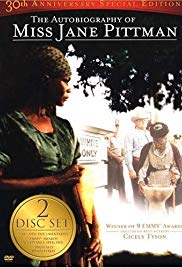In the Southern United States, until the Civil Rights movement of the 1960s, “Jim Crow Laws” prohibited blacks from using washrooms, water fountains, certain laundromats, and other facilities. Blacks could not eat at most restaurants and had to sit at the back of busses, the front being reserved for whites. These restrictions were constant and humiliating reminders to blacks of their second-class status. Repealing the Jim Crow laws and changing the customs of segregation were crucial parts of the Civil Rights Movement.
The term “Reconstruction” refers to the period from 1865 to 1877 in which freed slaves and the federal government tried to remake the South. Reconstruction ended with the collapse of the last Southern state government under the control of the Republican Party. Thereafter, in a period called “the Redemption” by Southern whites, the Reconstruction reforms, including universal public education, were scaled back.
Joe Louis (1914 – 1981), called the Brown Bomber, was a great heavyweight-boxing champion. He defended his title 25 times and was beaten only three times. One of those losses was in 1936 to a German national named Max Schmeling. The Nazis sought to use Schmeling’s victory as proof of their “Aryan” superiority. In a 1938 rematch, Louis knocked Schmeling out in one round, and most Americans celebrated Louis’ victory as a triumph for democracy. During the Second World War, Louis helped recruit soldiers and gave inspirational speeches. Miss Pittman refers to this fight in her conversation with young Jimmy. (Schmeling himself was not a sore loser and not a Nazi. Decades later when Louis was in financial trouble, Schmeling, along with many others, sent him money.)
Jackie Robinson (1919 – 1972) broke the color bar in professional baseball in 1947. Robinson batted .311 and was a daring base runner. In 1962 he was elected to the Baseball Hall of Fame. He is a hero to this day. See The Jackie Robinson Story.
The “Kingfish” reference is to Huey Long (1893 – 1935), governor of Louisiana beginning in 1928. Long made social and economic reforms but abused the democratic process through massive use of patronage. Long was so powerful in Louisiana that some viewed state government as semi-fascist. He was elected to the U.S. Senate in 1931 and attacked the New Deal, advocating his own “share the wealth” program. He was assassinated in 1935. Source: New American Encyclopedia article on Huey Long. For more on Huey Long, see Learning Guide to “All the King’s Men“.
The Cajuns are descendants of French Canadians deported from Nova Scotia to Louisiana by the British in 1755. They have a distinctive accent and a separate language which is a combination of archaic French forms and English, Spanish, German, Indian and Negro idioms.
The scene in which masked riders burn the school and kill the teacher represents many similar incidents in which whites sought to prevent blacks from bettering themselves. Remember that before the Civil War, it was illegal to teach a slave to read or write.






